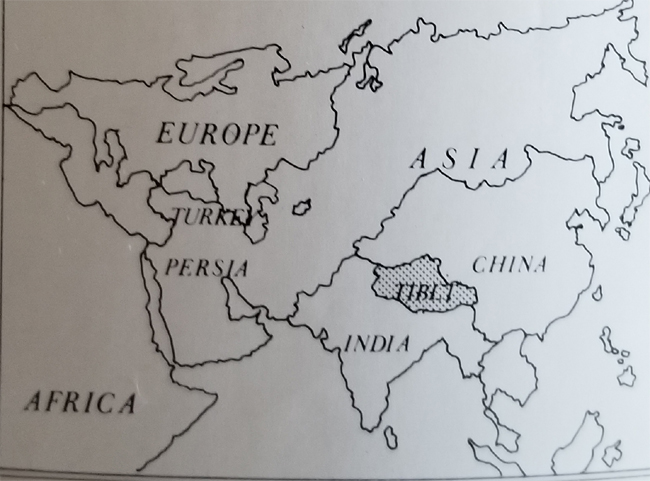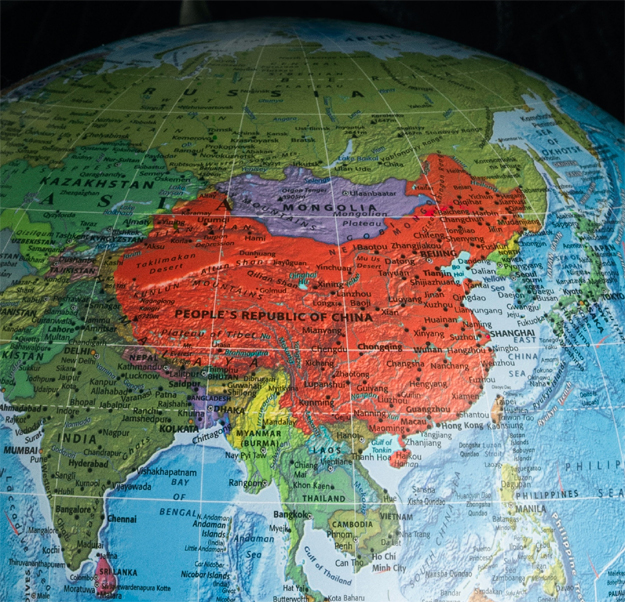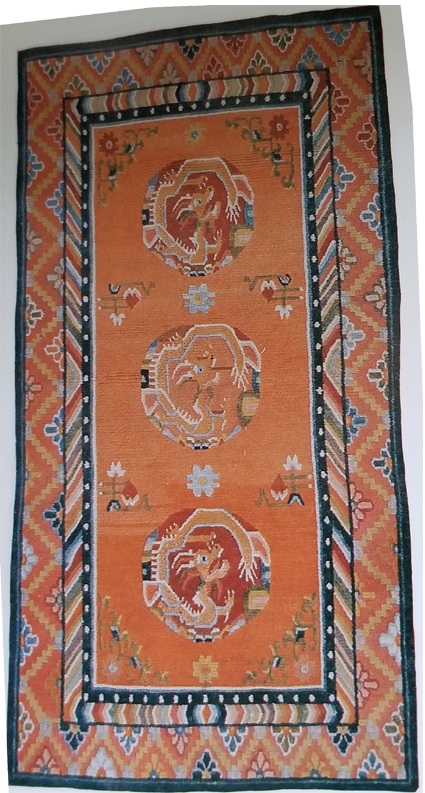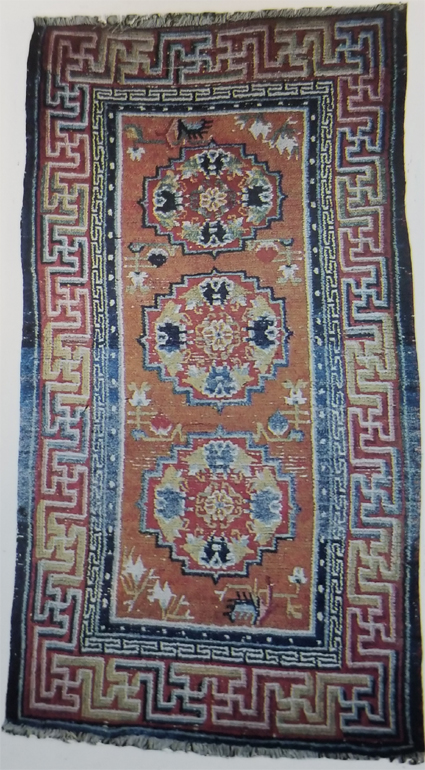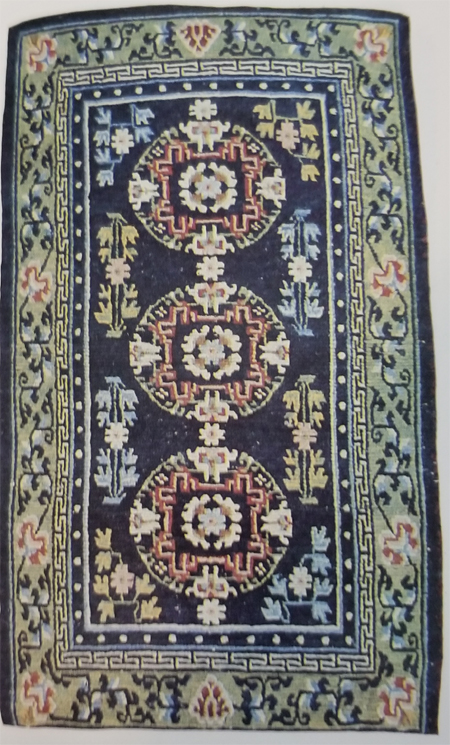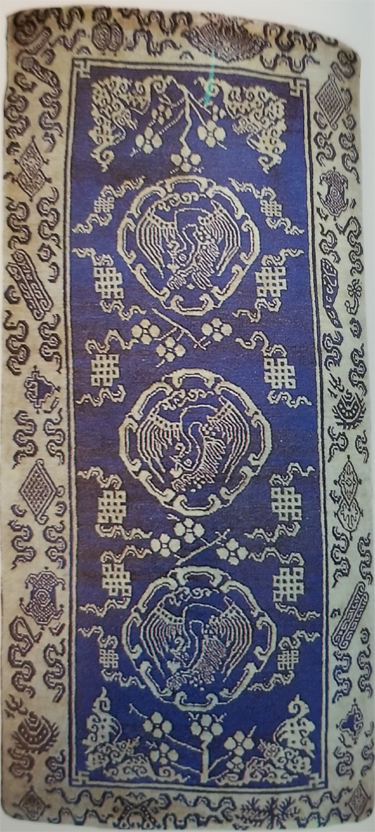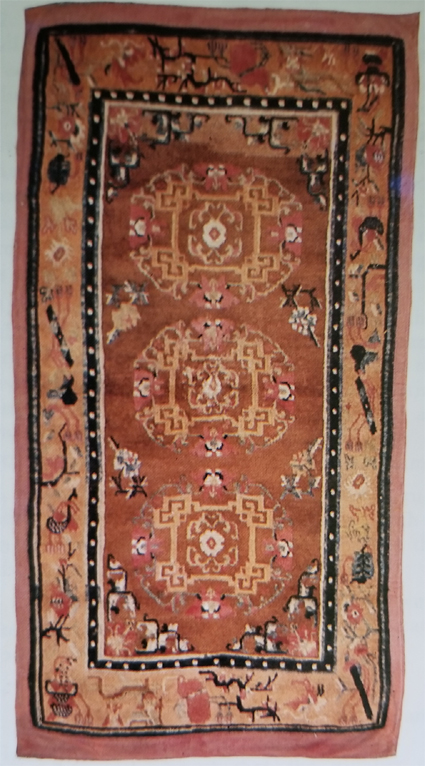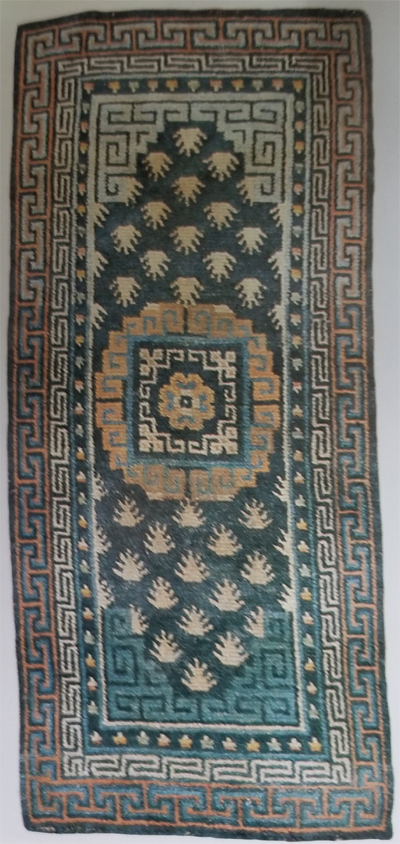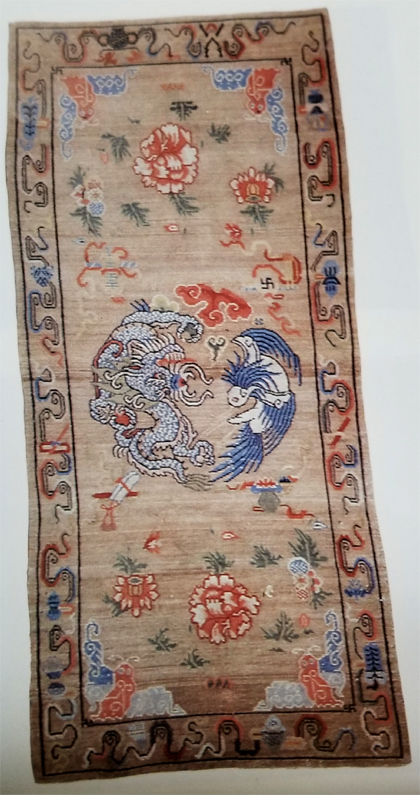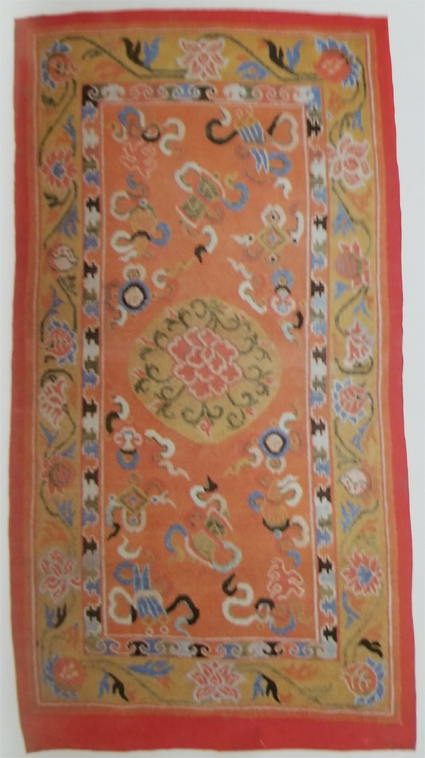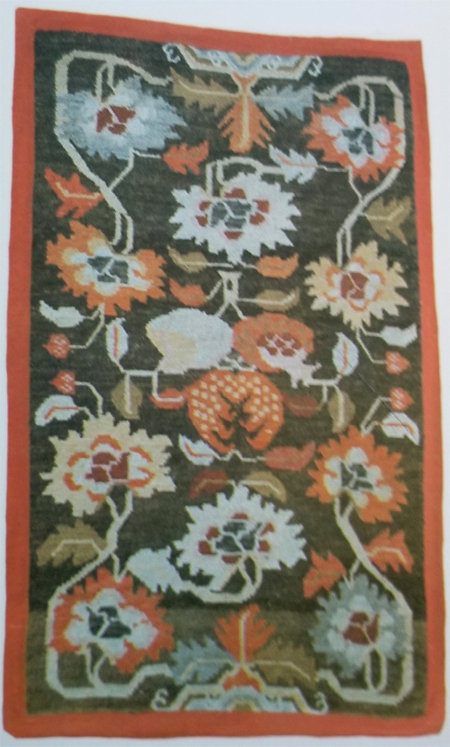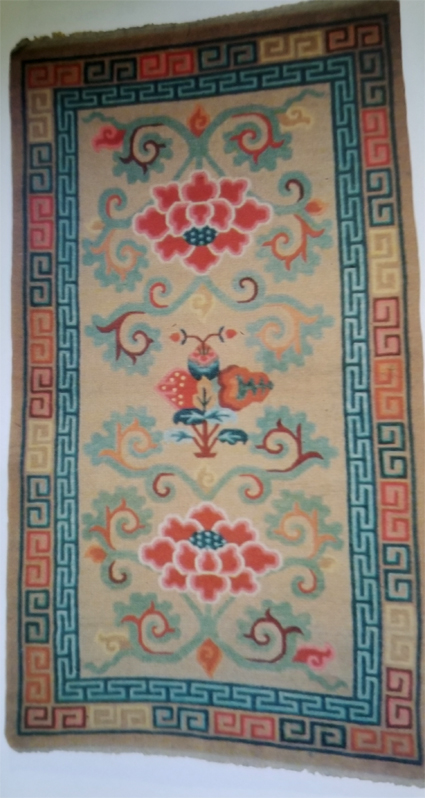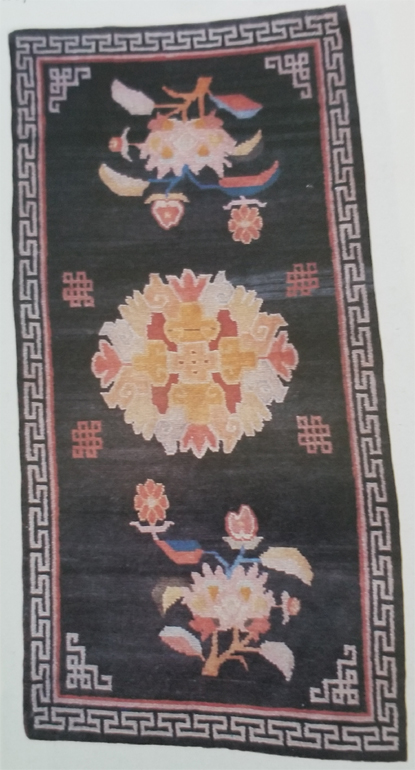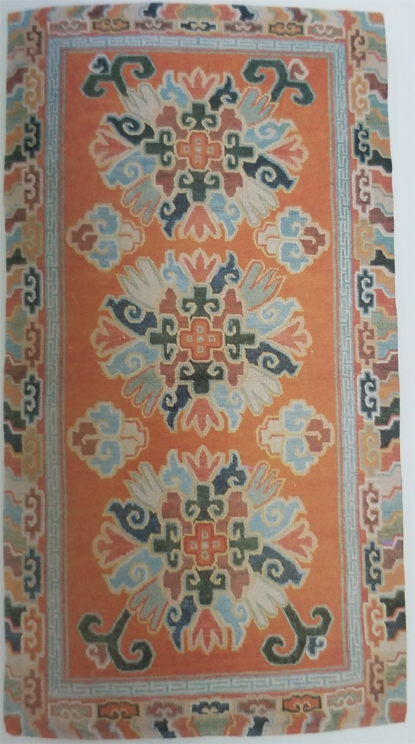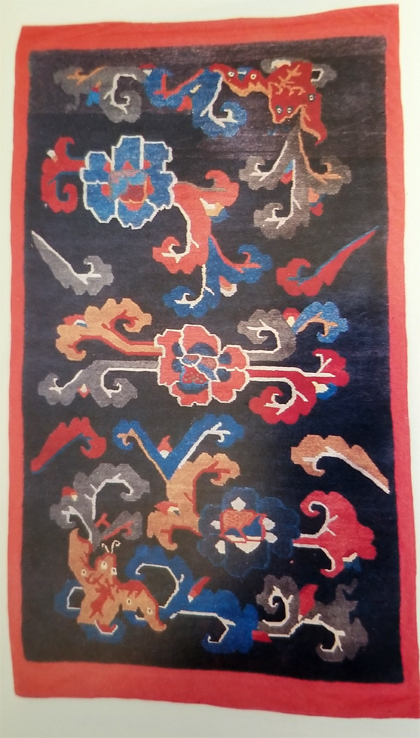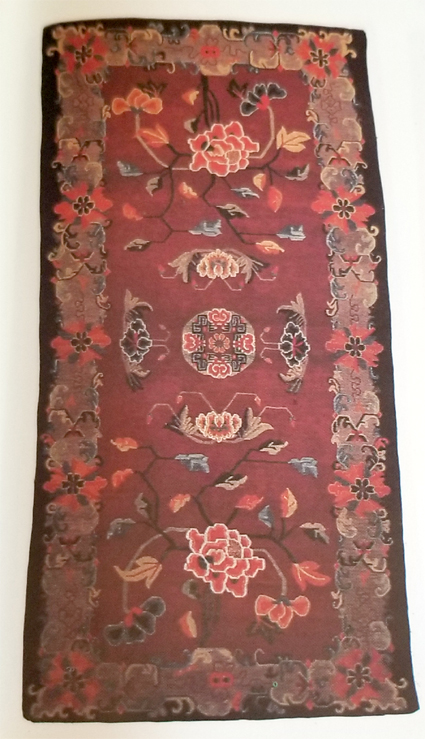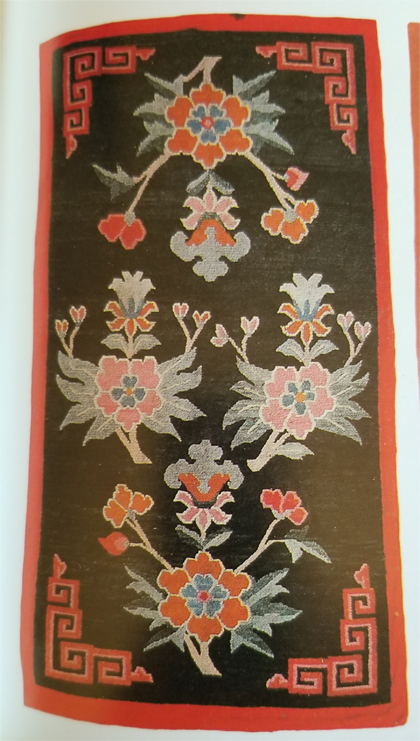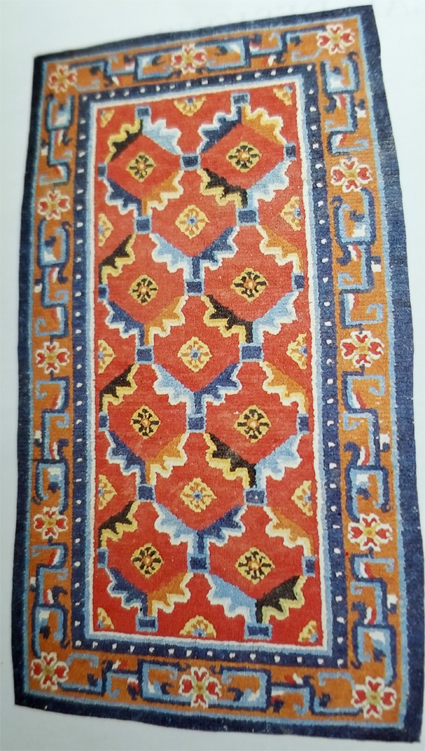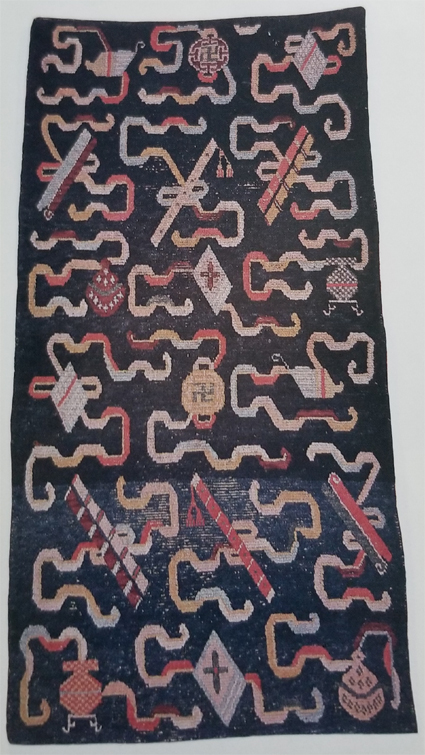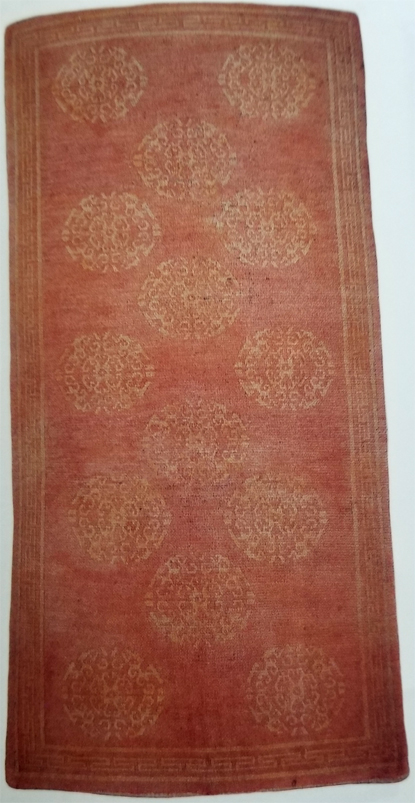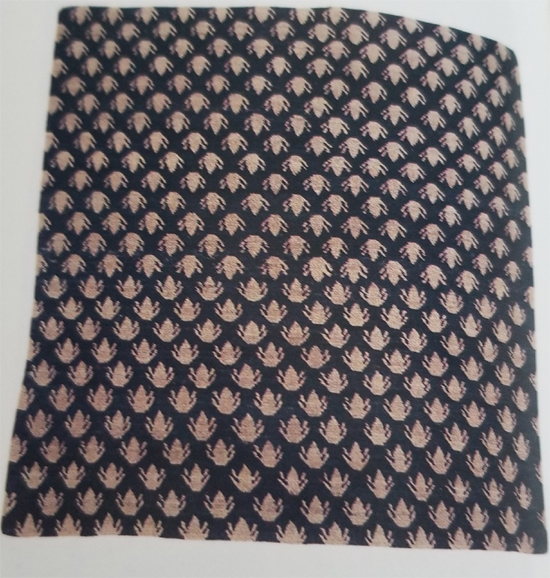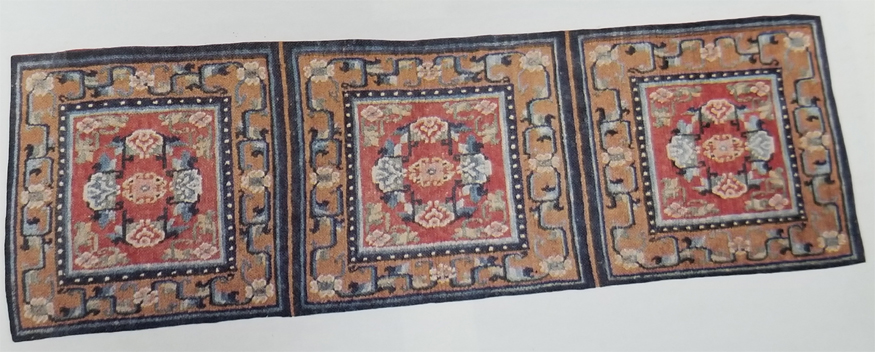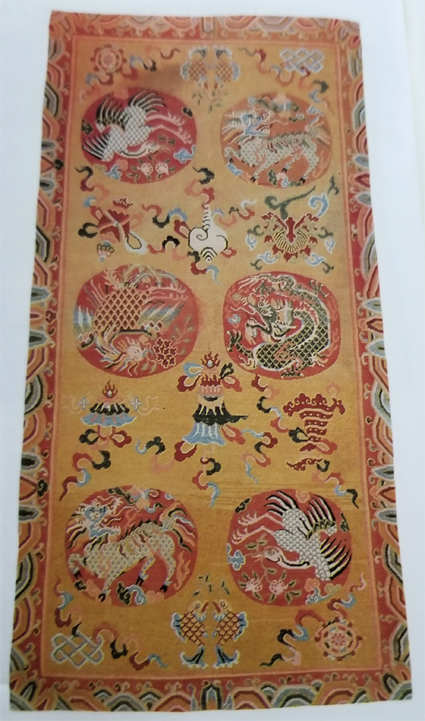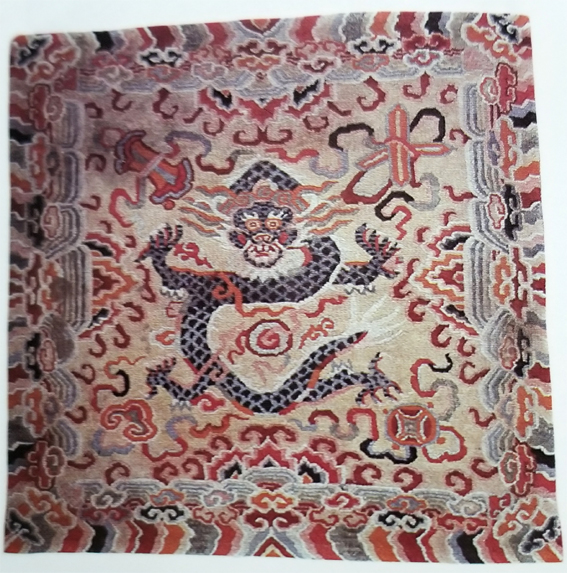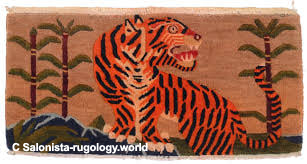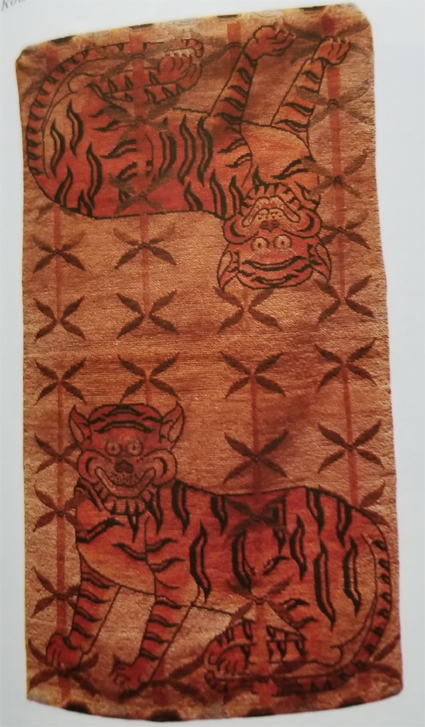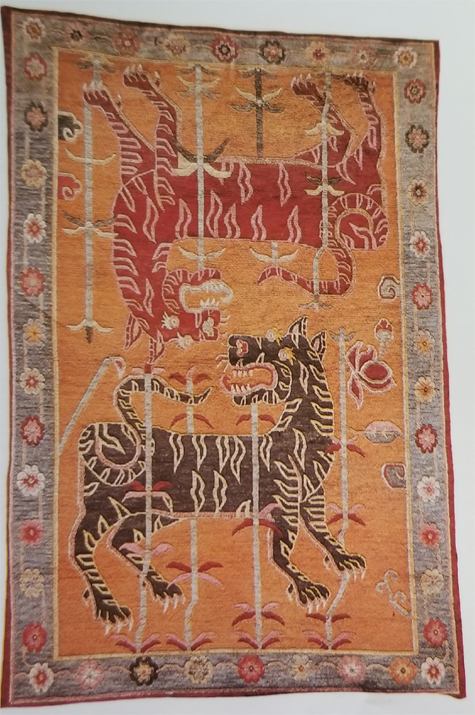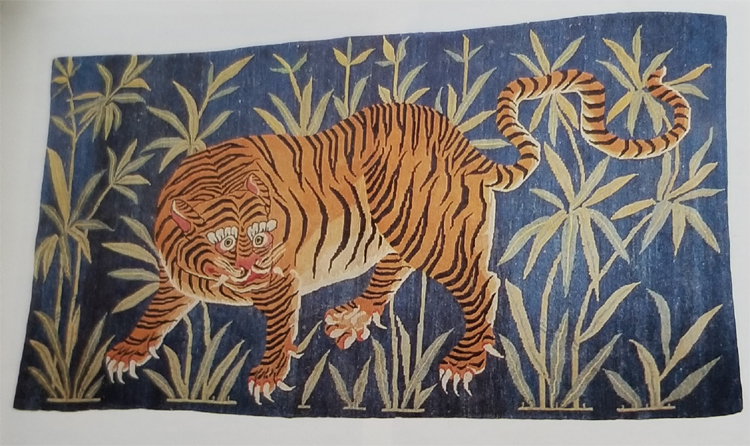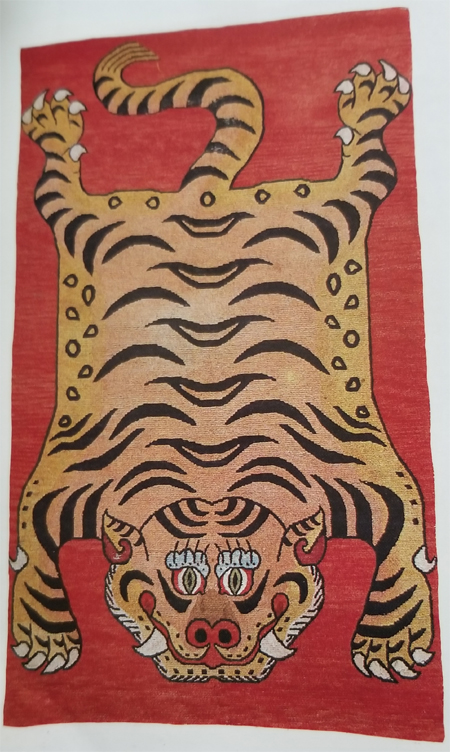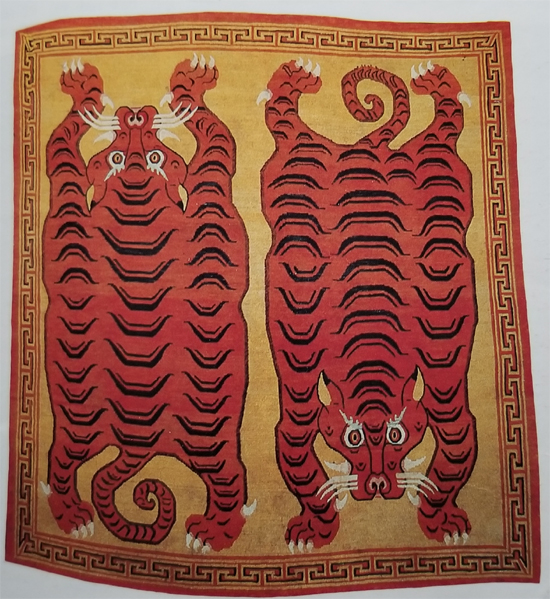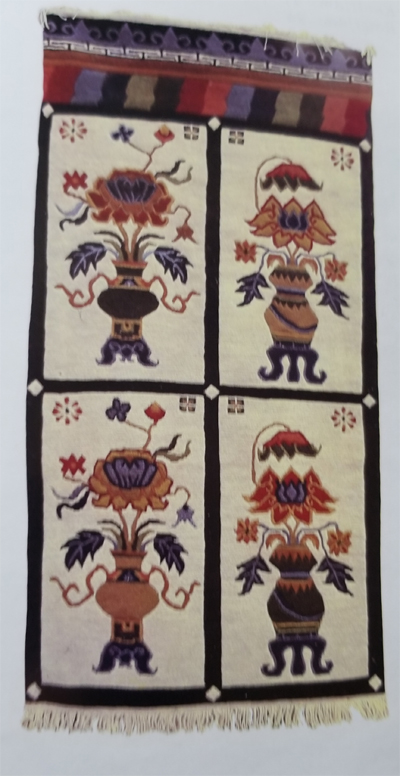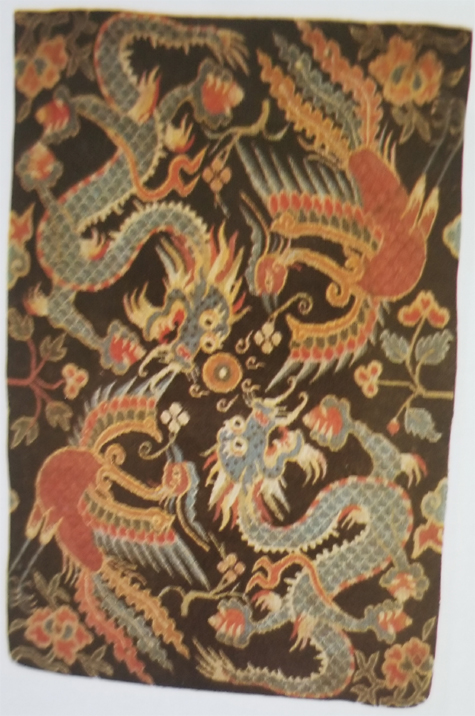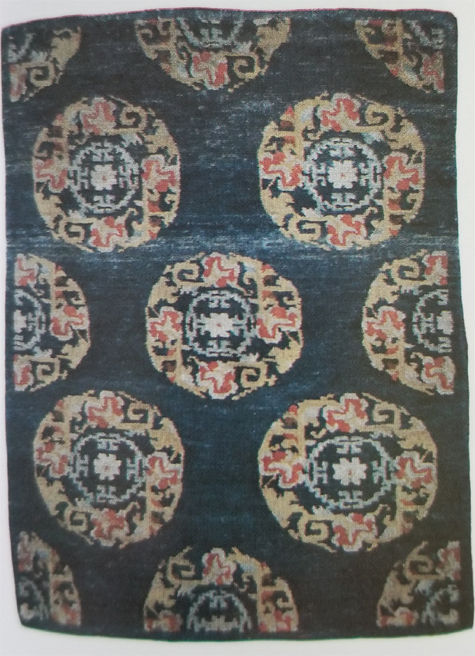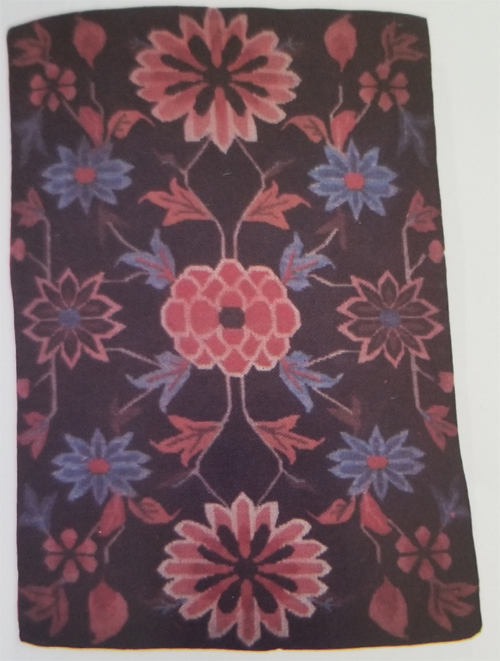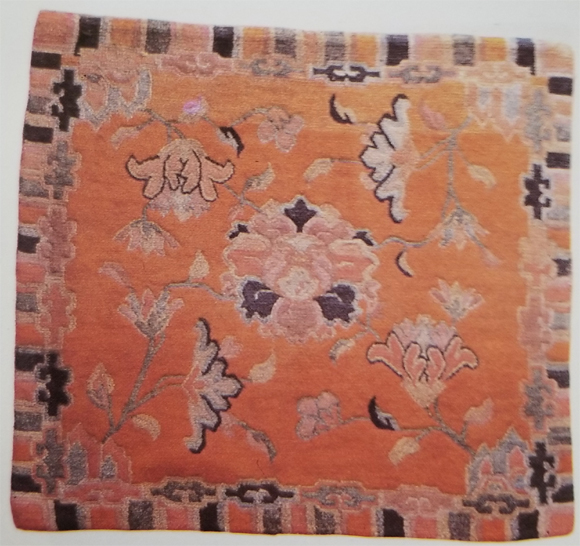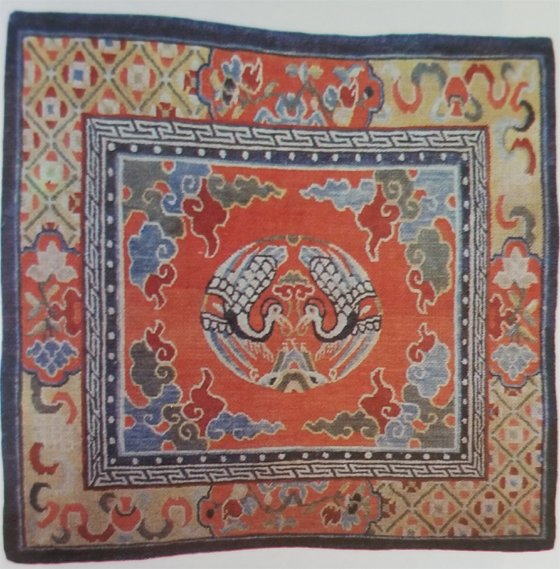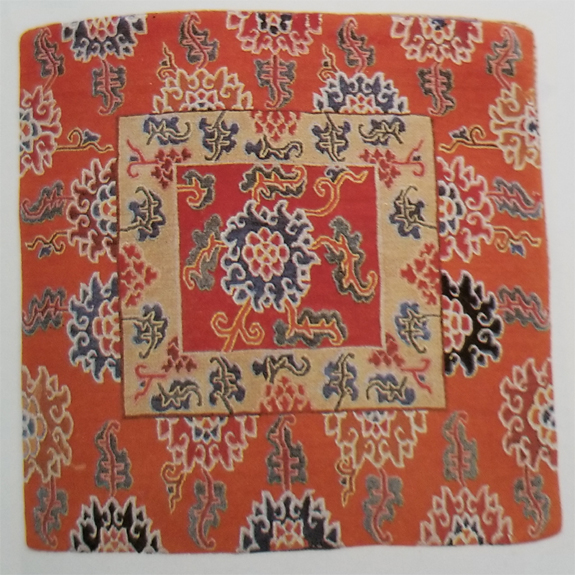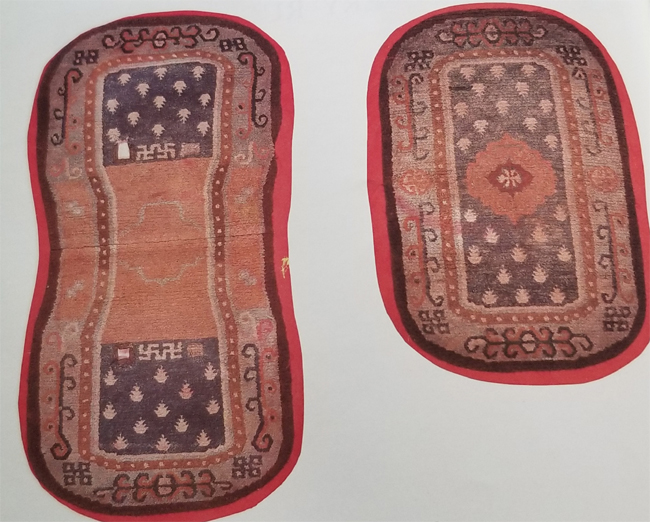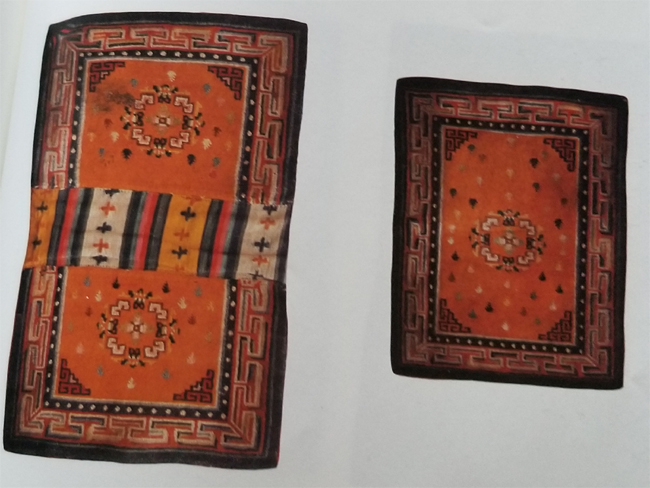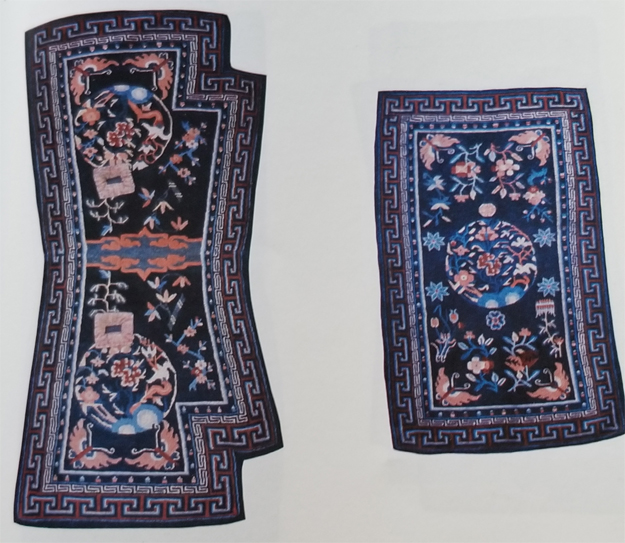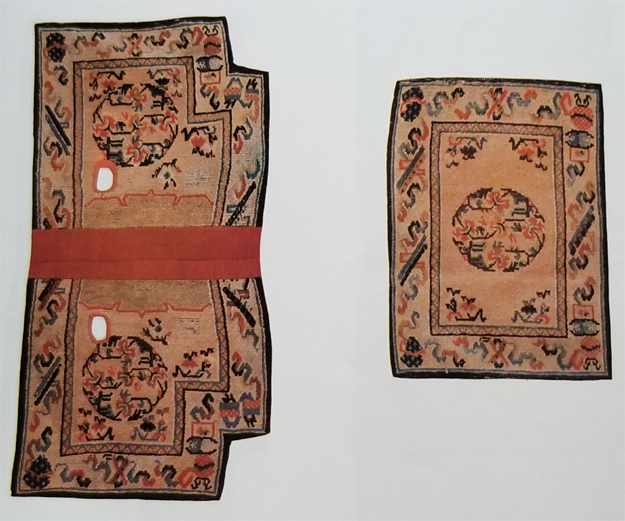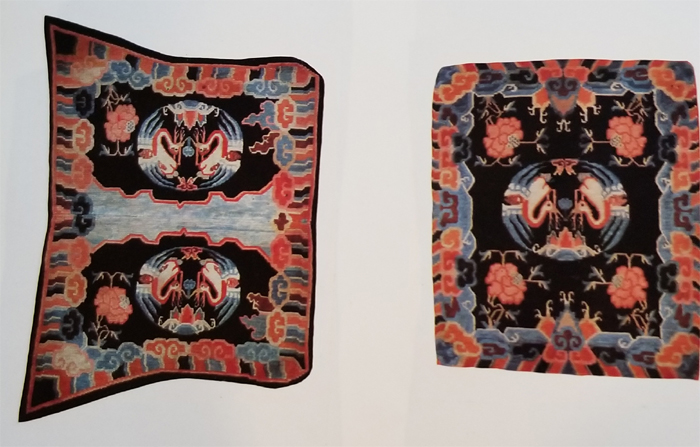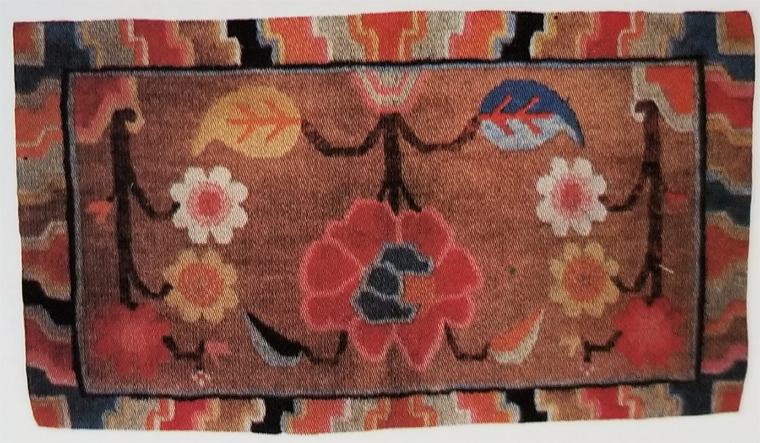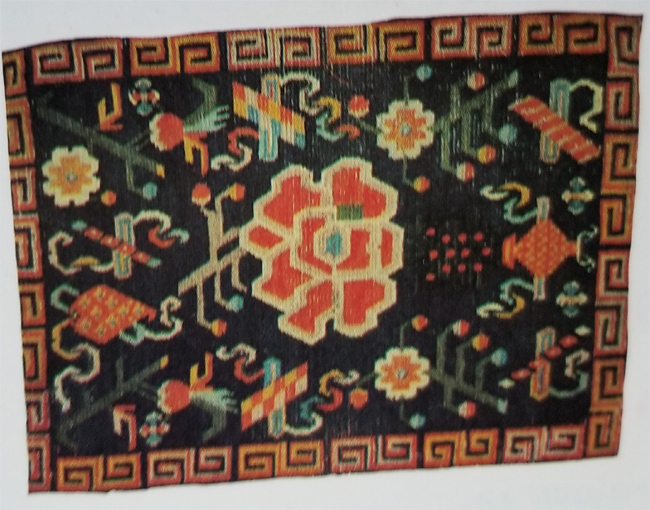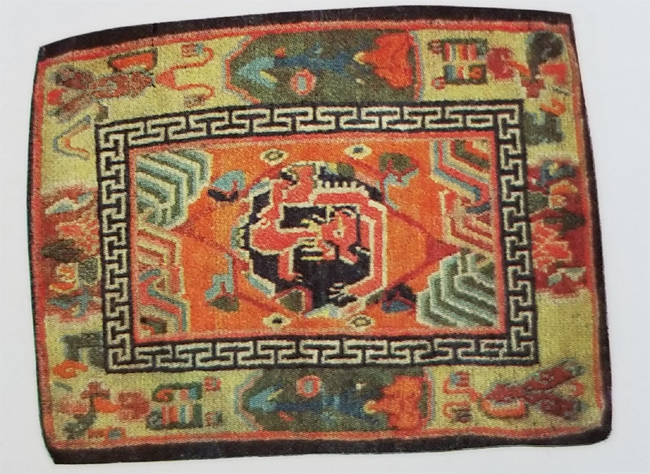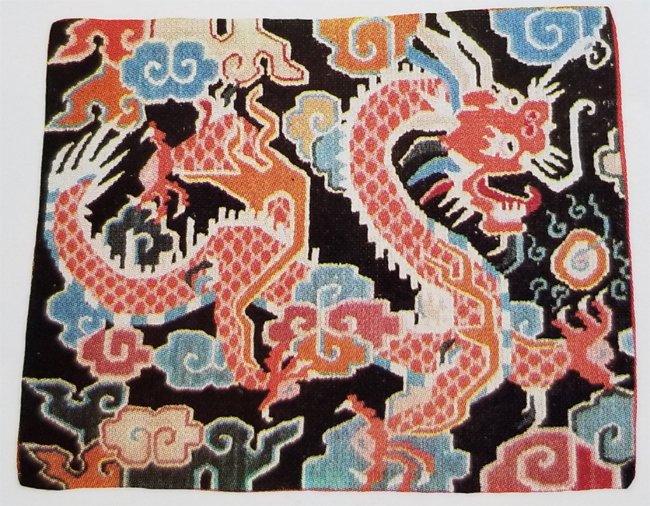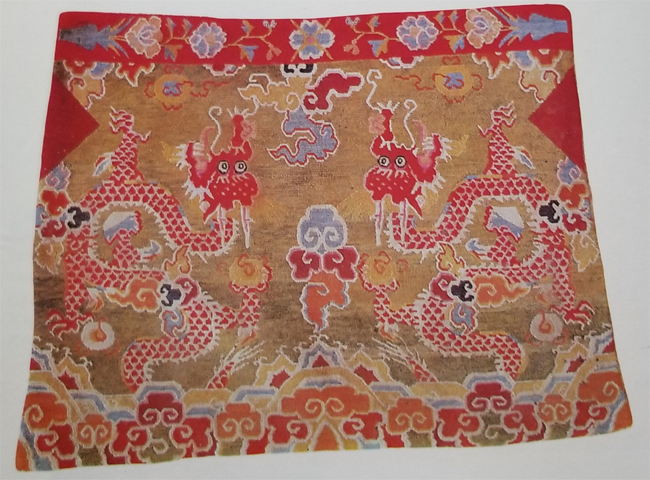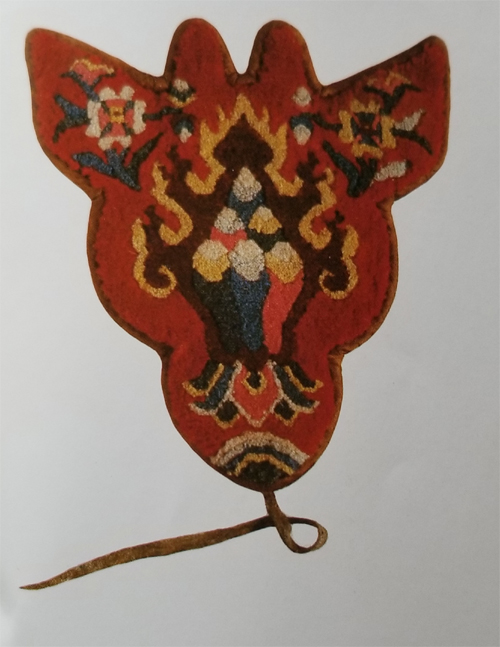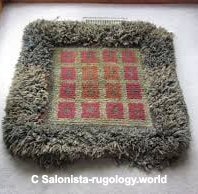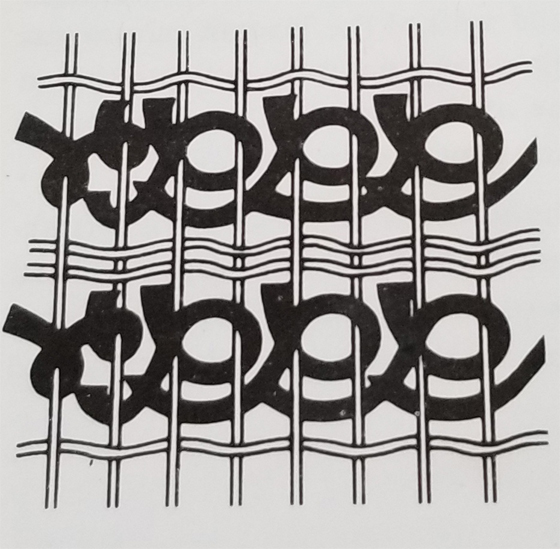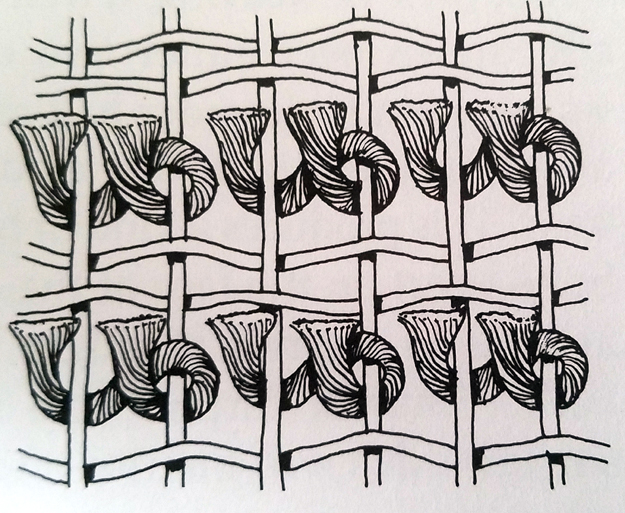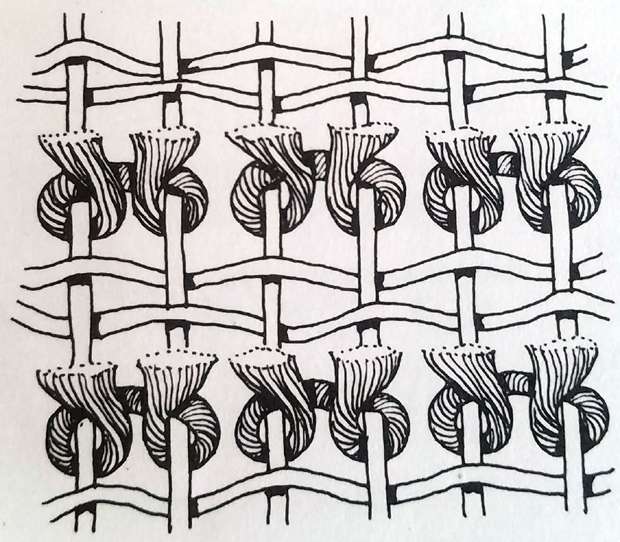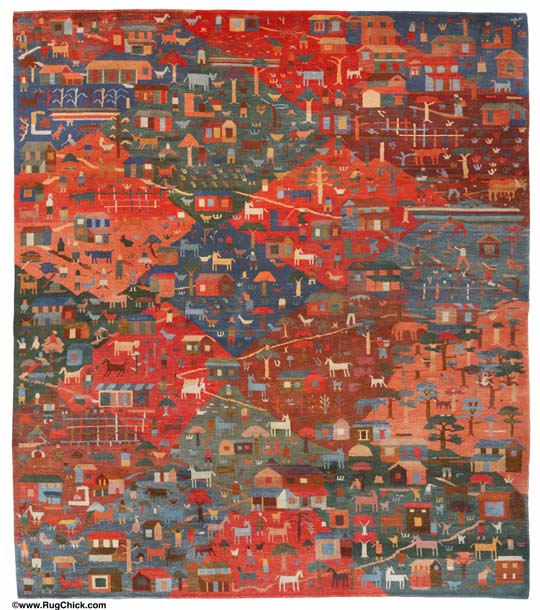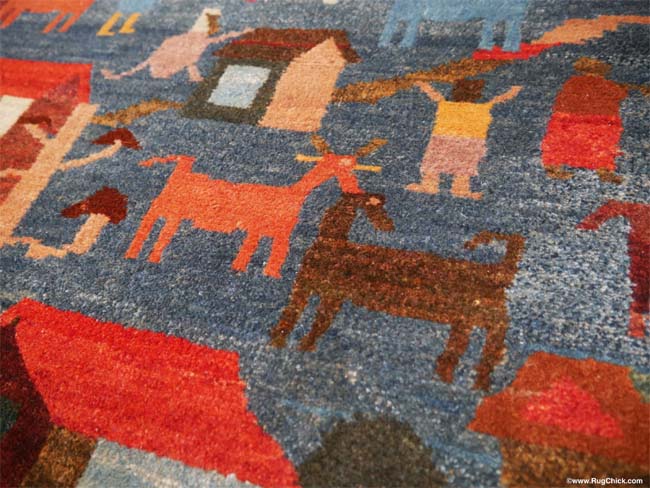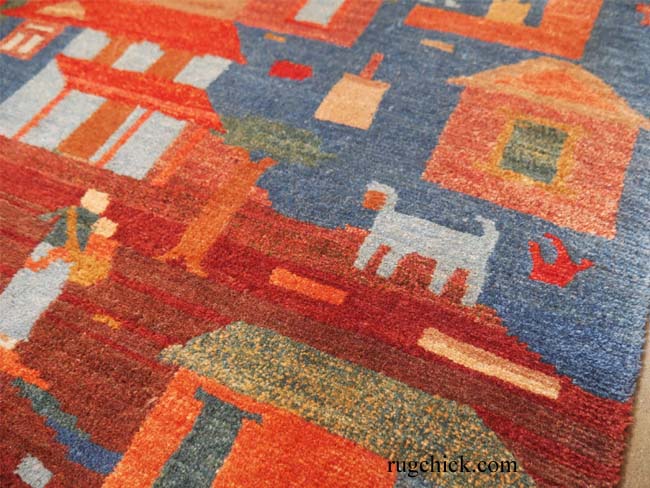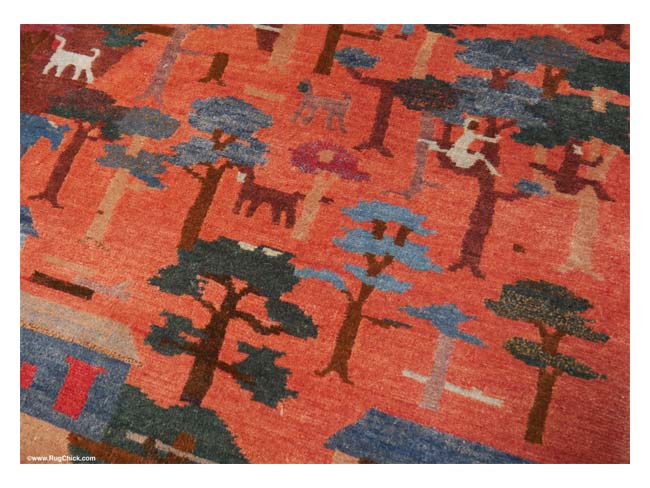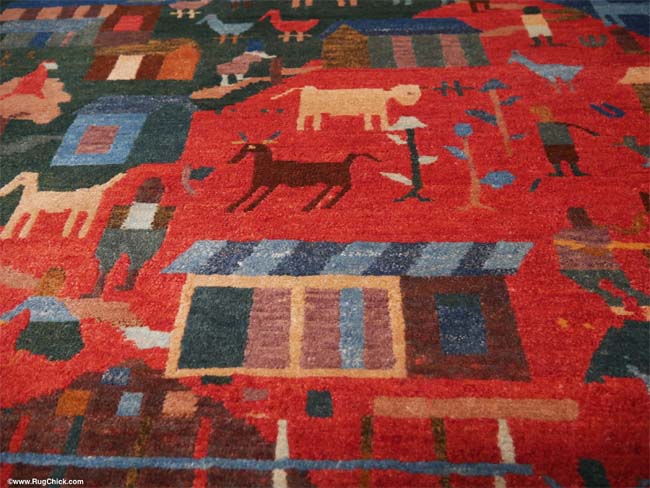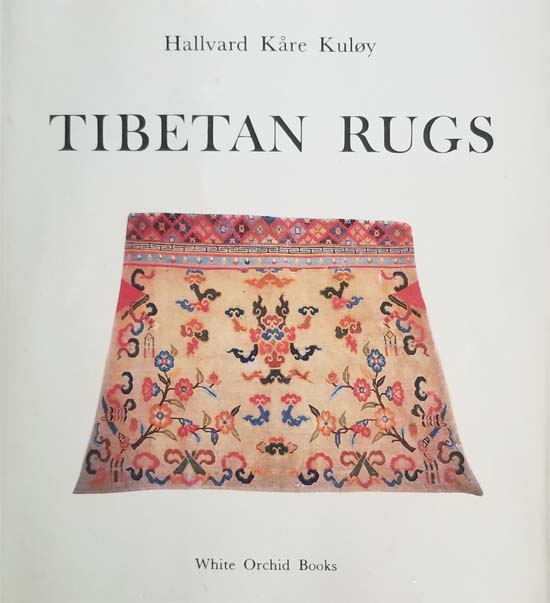TIBETAN RUGS
THE GEOGRAPHICAL LOCATION of
TIBET
Tibet is located geographically north of India, south and west of China, and east of the Soviet Union. The boundaries of Tibet have been a matter of dispute for some time but at the present Tibet is one of the Autonomous Regions of the People’s Republic of China.
The People’s Republic of China is divided broadly into five levels of administration. Autonomous bodies can exist in different levels of this division. Tibet is one of five of these regions that are at the provincial or first-level of administration.
Autonomous regions in China are classified by China’s ethnic minorities and are semi-self-governing regions for those minorities. They must still answer to the People’s Republic of China. Furthermore, they are instructed to place the interests of the larger Chinese state above all else.
Tensions between Tibet and China are extremely high at this time. China sees Tibet as an integral part of China, but Tibet does not agree. In 1959, after China invaded Tibet, the Central Tibetan Administration or CTA was formed by Tibet. The CTA is based in India and is commonly known as the Tibetan Government in Exile since China does not recognize it as a governing body.
EARLY TIBETAN RUGS
Rug weaving has been at the heart of the Tibetan culture since its earliest times and is at least as old as Buddhism. The weavings can naturally reflect Buddhism in both motif and theme of stylization.
The earliest rugs woven in Tibet were woven locally for use in homes and monasteries only. The exporting of rugs to the outside world didn’t exist. The rugs were considered as everyday objects and when they wore out, they were simply discarded with no thought or attempt to preserve them. Antique Tibetan rugs in the market today usually date from the late 1700s to the mid-1900s.
The cold climate of Tibet and the relatively unhurried pace of life over the centuries, combined with the hard work and industrious character of Tibetans, are some of the factors that have influenced the development of rug-knotting and the use of rugs in Tibet.
Over time, a large number of techniques, designs, and uses have been modified or changed from a wide variety of influences and contacts due to the geographical position of the country.
And yet, despite the outside influences, the Tibetan rug displays the artistic genius of the Tibetan people as a whole. Even with conditions of relative poverty and the availability of only a limited range of colors and raw materials, the Tibetan peasants were able to produce simple, elegant, wonderful rugs, even if the only reason to produce a rug was for household uses. The Tibetan rug is a very good example of ‘folk art’ and the act of weaving portrays the heart of the Tibetan tradition.
USES OF TIBETAN RUGS
Tibetan rugs have always had specific uses in Tibetan life and culture.
There are those used for sitting and sleeping on, others for use only in monasteries for rituals and ceremonies, those used only for seats on special occasions, and rugs for saddlery purposes, as well as a few others as noted below.
TIBETAN RUGS FOR SITTING AND SLEEPING ON
These are by far the most common and are rarely used as floor coverings. This type of rug is known as a khaden rug and they are usually found in 5’6 x 3’0 sizes. Some of them feature a wide red felt border and a cotton cloth backing. Rugs used only for sleeping are called nyeden rugs.
These types of Tibetan rugs feature several different designs:
MEDALLION DESIGNS
Almost half of all Tibetan rugs produced feature medallion designs. They can be found as one medallion or three medallions.
They can be geometric designs or flower designs combined with stylized flowers or just stylized flowers, or just geometric designs, and animal and mythological designs, as well as others.
Here are some examples:
FLOWER and ROSETTE DESIGNS
MYTHOLOGICAL ANIMAL and BIRD DESIGNS
GEOMETRIC DESIGNS
OTHER DESIGNS
RUGS USED IN MONASTERIES and FOR RITUALS and CEREMONIES
TEMPLE AISLE RUNNERS
These rugs were used extensively in monasteries and temples in Tibet.
In many adjacent geographical areas, such as eastern China, Nepal, Bhutan, etc., the standard khaden rug was used, but several other sizes and shapes were made specifically for religions purposes. These could include the long aisle runner. They are rarely offered for sale and are kept just in the monasteries.
SPECIAL RUGS for HIGH LAMAS
These were small rugs. Seat and cushion knotted-like rugs were also made for the use of lamas. Some rugs were imported from China, while others were made in Tibet. Rugs made for the clergy were usually in the traditional colors of red and orange.
RUGS for BOTH RELIGIOUS and HOME USE
TIBETAN TIGER RUGS
These are very familiar to most people. There are several kinds of Tibetan tiger rug designs. They can feature realistic renderings of tiger pelts or more abstracted versions of tiger stripes. Another type of tiger rug features a whole pelt, complete with legs and a grinning face.
The tiger skin is believed to provide protection to a person engaged in meditation. In a religious context, tiger rugs are related to the tiger skin loin cloths seen in painted images of fierce Tibetan Buddhist gods.
Tiger skins used by high lamas as seats were meant to symbolize that the lamas had the ability to control man’s wild impulses.
Some tiger designs are crafted in the Khotan rugs from China, but it is among Tibetan weavers that these designs achieve their highest development.
DOOR CURTAIN RUGS
Door Curtain rugs are called goyo and are used widely in Tibet as well as Bhutan in the cold, dusty, and windy climate.
They are usually made from brightly colored wool, cotton cloth or from felt.
This is a uniquely Tibetan product to be used in monasteries, private houses, and government offices.
RUGS USED for SEATS on SPECIAL OCCASIONS
There were 2 such
types of rugs used. The first were the width of the temple aisle runner and
were square. They are called Khagangma
(on top) and were used exclusively on top of the temple aisle runner. It seems
apparent that high ranking persons or honored guests were meant to sit not only
on one rug, but at least on two!
The second type was very special and were traditionally used as seats for important guests on important occasions and always on top of another rug.
SADDLE RUGS
The saddle rugs of Tibet generally consisted of 2 pieces. The larger bottom rug was to be kept between the horse and the wooden saddle while the one smaller square or rectangular top piece was kept between the saddle and the rider. A woolen or felt cloth would often be put between the horse and the bottom saddle rug as well.
The different types of saddle rugs can be found below:
OVAL BOTTOM and TOP SADDLE RUGS
RECTANGULAR BOTTOM and TOP SADDLE RUGS
RECTANGULAR BOTTOM SADDLE RUGS with INDENTED CORNERS and LONG TOP RUGS
RECTANGULAR BOTTOM SADDLE RUGS with INDENTED CORNERS and SHORT TOP RUGS
BUTTERFLY SHAPED BOTTOM SADDLE RUGS and RECTANGULAR TOP RUGS
TIBETAN INDIVIDUAL TOP SADDLE RUGS without MATCHING BOTTOM RUGS
OTHER SADDLERY ACCESSORIES
HORSE BLANKETS
These are called takheb. This type of rug was not
commonly made in Tibet.
HORSE 'JEWELRY'
These were
decorations for a horse. An example might be a forehead cover for a horse or
mule (horse-tiara). They can be made of cloth which is often embroidered or
knotted like a rug.
The Tibetans believe these rugs keep the forehead warm allowing the horse to retain his strength this way.
RUGS USED FOR OTHER PURPOSES
SMALL RUGS
These were usually made for sitting on and could sometimes be a copy of all or part of a larger rug.
BACK REST CUSHIONS
These were made to be firm to be used as a back rest. They were probably for special occasions.
LARGE RUGS TO BE USED ON FLOORS
These are called sabden. Traditionally they were not made in Tibet (except for very special uses). The making of these large rugs in Tibet is of recent origin and generally in response to export demands.
RUNNERS MADE FOR EXPORT TO NEPAL
These rugs are narrower than the traditional Tibetan temple aisle runner and were used by high-caste Hindus of Nepal for religious or other occasions where mass feeding was involved.
OVERSIZE SITTING and SLEEPING RUGS
In Tibetan homes, this khaden type of rug would ordinarily be used to sit on and sometimes with a top rug added for important persons. Better off households would make extra long khaden rugs for their own particular requirements or taste.
WANGDEN RUGS
There is also another type of rugs called wangden that have a looser weave and a thicker pile than a typical Tibetan carpet and sport a thick shaggy fringe. Today these rugs are woven only in the Wangden Valley, a remote valley in the Tsang province, running north to south in southern Tibet, although their manufacture may have been more widespread at one time.
The Wangden valley has 22 villages made up of only a few households, and three monasteries. This rug was originally made for monastic use as a sitting carpet. Some monasteries still have long wangden runners on the bench seats used by monks during ceremonies. New rugs are still being woven, though mainly for domestic use and for the visitor market in Lhasa.
Wangden was once famous throughout Tibet. Its style of rug weaving was not practiced anywhere else in Tibet and was in great demand by monasteries as meditation mats. They may have been the first type of knotted pile rug ever woven in Tibet.
COLORS USED in TIBETAN RUGS
The most common colors of Tibetan rugs are indigo blue, red, pink, orange, yellow, brown, green, white, grey, and black.
The colors of orange and red will typically be found in Tibetan rugs woven to be used for ecclesiastical purposes.
INTRODUCTION of SYNTHETIC or ANILINE DYES TO TIBETAN WEAVING
The introduction of synthetic or aniline dyes in the latter part of the 19th century was the most detrimental aspect of outside influence and of trade on Tibetan rug making (rug making in Asia was adversely affected as well).
Up until 1959, Tibetan weavers used wool that was largely hand-spun and the dyeing was done by old masters of the craft and by the weavers themselves. This arrangement also made it possible to use organic dyes, if desired.
Although Tibetan weavers accepted aniline dyes as well as cotton thread and even machine spun wool, they were able to maintain, for the most part, their own characteristic Sino-Tibetan design elements and their traditional sense of color.
TIBETAN RUG CONSTRUCTION
FOUNDATION - WARP and WEFT
Pre-1930 rugs had both the warp and the weft of the foundation made from sheep’s wool. Eventually the wool warp (up and down) was replaced by cotton, most likely in the 1940s. The wool weft (up and down) was replaced by cotton most likely in the 1960s. Occasionally, there can be found a cotton/wool or silk/wool mixture used in the warp as well as yak-wool in the warp and weft.
PILE
The pile was typically made of wool. Newer rugs made in India and Nepal could contain a mixture of jute and wool which is inferior to an all-wool pile.
EDGES
The edges were knotted with woolen fringes but could also be bordered with thick felt and backed with thick, dark blue cotton cloth. Currently, new rugs are rarely bordered and backed except for saddle rugs.
THE TIBETAN KNOT
All throughout Asia, except in Tibet, there are basically 2 types of knots, the Turkish or Ghiordes knot and the Persian or Senna knot. China uses the Persian knot exclusively so it can be easier to distinguish between Tibetan and Chinese rugs.
The technical name of the Tibetan knot is the Senna Loop. The origin of this knot has been a mystery for scholars of Tibetan history. There is evidence that some versions of the Senna loop knotting technique existed in the 4th and 5th century AD in Egypt. The rya rug of Scandinavia uses a type of Senna Loop today.
The Tibetan weaving technique is quite different from the Persian and Turkish weaving technique.
The warps (up and down) cords of Tibetan rugs are stretched on a loom. Then a continuous length of yarn is wrapped over a rod which is laid across those warps. When the rod has been wrapped for its entire length, a knife is slid along the rod, cutting the wrapped yarn into two rows of pile tufts.
Shearing of completed Tibetan rugs is necessary in order to smooth the surface of the pile to remove irregularities in the pile length and knotting.
The thickness of the wool for the pile, the wool or cotton for the weft, and the wool or cotton for the warp were the determining factors used to execute the final design. It is this freedom in choices that gives the opportunity for creative ideas resulting in beautiful, yet simple rugs.
Modern Tibetan rugs made of machine-spun and dyed wool pile and industrially produced cotton warp foundation are much less unique in design than the older rugs.
DESIGN ELEMENTS OF TIBETAN RUGS
It is interesting to note that there is a wide variety of design elements and motifs that make up a complete Tibetan rug but many or all of the elements may have little or no symbolic meaning to the weaver.
With the exception of Tibetan rugs made exclusively for religious purposes, Tibetan rugs are not consciously made symbolic representations of higher symbolic or mythological ideas or ideals. Certain design elements will be found only in certain types of designs, while other certain design elements are usually combined. And there are others that are never seen together.
Tibetan rug making is a true folk art and each Tibetan rug reflects the weaver’s own cultural tradition. Please see our article on Tibetan Rug Design for in-depth information and examples.
TIBETAN RUGS TODAY
After the 1959 invasion, tens of thousands of Tibetans fled to Nepal and India. That is why rugs woven by Tibetan weavers may say they are made in Nepal or India rather than Tibet.
The Tibetan Weaving Project was established in 1990 to help support the weaving craft and generate revenue for building schools and to help the Tibetan communities in Nepal, India, and in eastern Tibet.
The rug shown below is from a division of the Project, Gaon Naksha. In the main Tibetan Weaving Project, many traditional Tibetan designs are being woven, but this division allows weavers to have creative freedom of their designs and many weave free-form images of village life in Nepal.
The wool is Himalayan and it is strong soft, and dense. The dyes are all natural using the plants and minerals located in the region.
Text and images found in this article from the book, Tibetan Rugs, by Hallvard Kare Kuloy were used with permission from the publisher, Orchid Press Publishing Ltd., Bangkok, Thailand.
Unfortunately, the author of the book is deceased and the book is currently out
of print, although some copies may still be found on Amazon and eBay.
Orchid Press and a sister company, Orchid Books, offers an amazingly wide array of titles
on Asian countries, cultures, arts, histories, religions, and other areas
of interest, directly and
via various bookshops and sales channels worldwide.
The fascinating history of Hallvard Kare Kuloy himself is documented on the website as well.
Please click below to learn more:
https://www.biblio.com/bookstore/orchid-books-bangkok
"The Cleanest Clean You've Ever Seen."
by
ABC Oriental Rug & Carpet Cleaning Co.
130 Cecil Malone Drive Ithaca, NY 14850
607-272-1566

ABC
Carpet & Rug
Spotting Guide
ABC Oriental Rug is on Facebook!
We regularly post tips and information about your carpet, rugs, upholstery, and tile and grout so please visit us often.
We update our Facebook page with our latest discounts and we are also offering exclusive promotions to our Facebook fans. These are limited and short notice promotions.
When you like our page, you will also be able to claim your special gift from us!
"Like Us"
on Facebook
and find out
what's going on!
Did you know that our ABC Responsible Care Spotter can get those pesky spots out of your carpet and will work equally as well on your clothes and upholstery?
Stop by our office and pick one up. They are $5.00 + Tax but if you have carpets or upholstery cleaned in your home or business, just request a free one from your Technician.
And don't forget to fill out the form above to download your free ABC Spotting Guide!
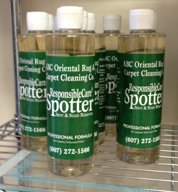
Oriental and Area Rug Washing at ABC Oriental Rug
Rugs on the wash floor are gently scrubbed before thorough rinsing.
Gentle scrubbing continues. Note the wringer in the background-the next step in the washing process after rinsing.
After thorough rinsing, the rug is sent slowly and carefully through the wringer to take out as much of the water as possible before being hung on racks in the drying room.
Rugs are hung on a rack in the temperature controlled drying room until completely dry.
